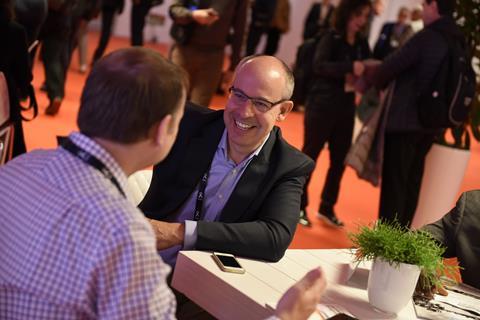There are more than 50 commercial Ultra HD services worldwide yet the key to success is yet to be determined, according to experts at IBC2017.

UHD has been afloat for a while now, with varying stories or success, triumph and take-off, the debate around UHD production impacting broadcasting workflows and meeting consumer expectations were hot topics for senior experts.
The greater demand for crafting UHD and HDR TV content is extremely important according to Sony Pictures Entertainment SVP of Technology Bill Baggelaar, who is passionate about the visible difference it can make to a production.
Baggelaar explained the first transmission of a show might not require 4K/UHD but ancillary sales to Netflix might require an improved quality.
Speaking to IBC365 ahead of joining the UHD panel discussion, he said: “On the broadcasting side it is a fact that the networks love the benefits, and would transmit if they could.
“They just need to figure out how to do it in a reliable and cost-effective way. Then you’ll see an HDR avalanche happen.”
During the Forum session which explored where the industry is with UHD and where it is going, the EBU’s Dr Hans Hoffmann explained that overcoming a fragmented technology ecosystem is the answer to widescale take-up of advanced UHD formats.
The main factors slowing down market adoption is the operational impact, with investment and service roll-outs put on hold until the industry stabilises.
“The industry has created a very fragmented environment, which made it difficult for public broadcasters to jump on the Ultra HD train.”
According to senior industry figures from Sky, Sony Pictures Entertainment, Netflix, Ericsson and Molinare who assembled during IBC they agreed the main problem with UHD adoption was the initial push from manufacturers and ensuring that consumers will be satisfied with the appropriate content in this new format.
Sky’s Chief Engineer, Broadcast Strategy, Chris Johns said: “The screens came on the market but there wasn’t the content.
“We have to move forward carefully to make sure that we deliver a prime VIP 4K experience. If we don’t deliver the customer will push back against 4K and we don’t want that.”
The roll out of UHD services has been slower than first anticipated. For Netflix UHD production is standard however Ericsson Strategic Product Manager and Encoding Portfolio, Mark Horton added to the discussion, for live events the lack of expertise in 4K was the real issue.
As publicised at IBC2017, the Berlin Philharmonic orchestra has been using new video facilities to capture weekly performancesin HD with UHD live streaming commencing summer of 2018. A big challenge was ensuring there is no latency and delay.
Using Panasonic’s AK-UB300 remote box cameras, streamline the production and according to Panasonic’s Manager Project Sales Robert Trebus, the result is now perfect. He said: “We followed what we believe will be standard in future.”
However, not everyone is on board with talk of broadcasters facing severe bandwidth limitations and huge expenses, Ikegami Division Manager, Broadcast and Professional Video Division Michael Lätzsch said: “There is much more interest in HDR than in 4K.”
Lätzsch continued: “People are looking for the possibility to add more value to their images, but with 4K you invest a hell of a lot of money for your infrastructure, and there are only limited UHD transmission possibilities right now.”
Wrapping up the UHD debates was the UHD Forum Masterclass focusing on end-to-end solutions and looking to the future.
Ultimately, the user experience (UX) was the feature theme, with UHD Forum President and session chair Thierry Fautier telling delegates the pace of UHD adoption is different to OTT models but the UHD possibilities are evolving.
UHD Work Guidelines Chair Madeleine Noland said: “Our goal is to help the industry adopt UHD”.
























No comments yet